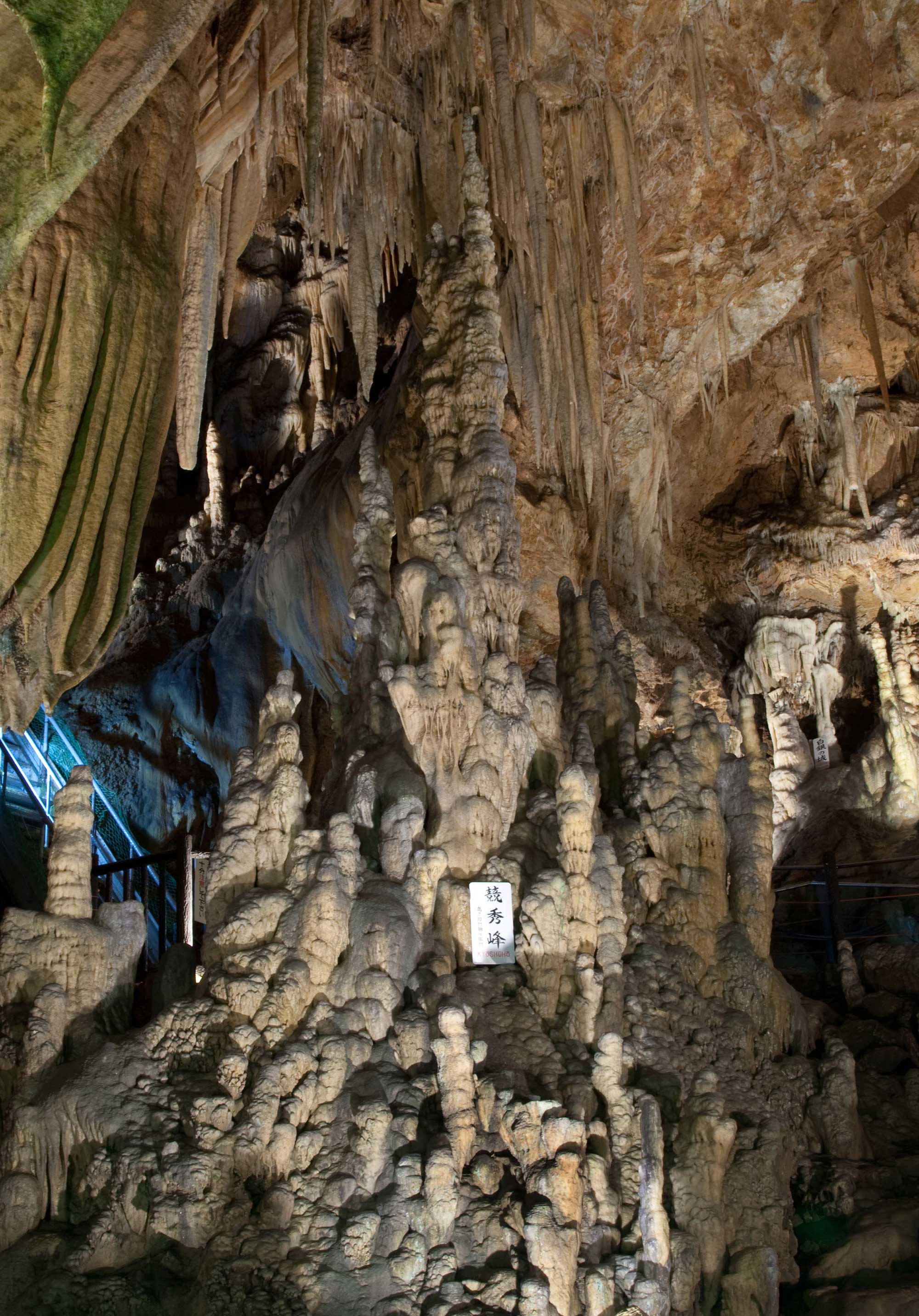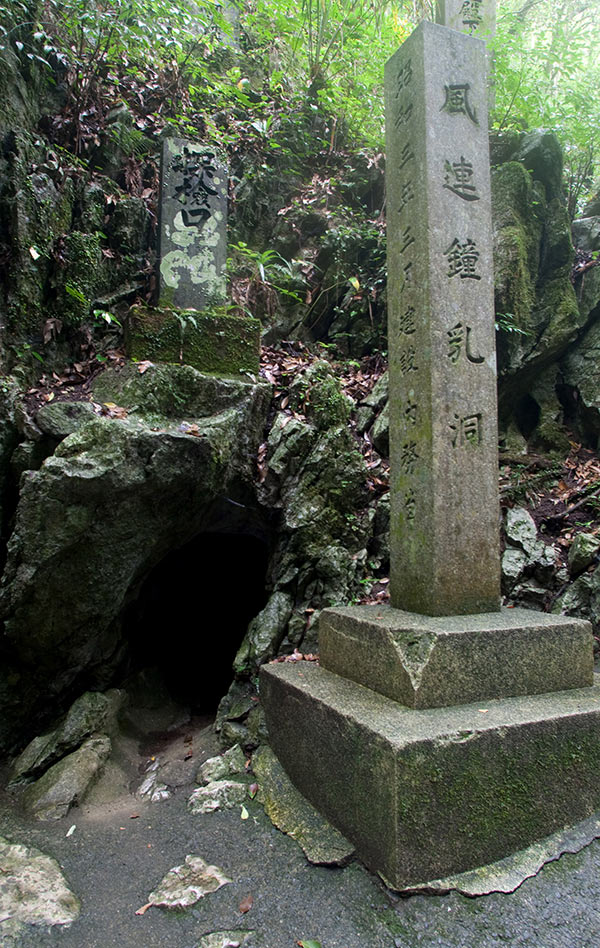

- Kennan Area
- Landscape
Furen Limestone Cave
Photography/MIYAJI Yasuhiko
Japan’s Most Beautiful
In the southern part of Oita lies the limestone mountains. Tsukumi is famous for mining and the karst tableland of Hachinohe is well known, and from there further to the Kyushu Mountains, a limestone stratum called “Chichibu paleozoic strata” continues between the inland and the coastal area.
The limestone looks white. Because of this, many places in the area are called Hakusan (White Mountain), Shirotani (White Valley), and Shiraiwa (White Rock), and they are collectively referred to as the “White Line” of Oita. At the same time, limestone is quite easily dissolved in water, creating caves here and there. For example, Saiki in the south side has Onagara and Kariu caves, up north in Bungo Ono has the Inazumi Underwater Cave, then the Furen Limestone Cave of Notsu, Usuki, which is said to be the most beautiful cave of Japan.
Furen cave was discovered in 1926, and was soon designated as a Natural Monument of Japan. There are the old cave and the new cave, with the length about 500 meters. The cave is “closed,” so there is not much air from outside coming in, which prevented weathering, and no artificial process was made until it was discovered so the nature is well preserved, keeping the beautiful white color and stunningly grown limestone.
Once you enter the cave, you will be greeted by a turtle-shaped limestone. “Zuiun no Taki (Falls of Auspicious Clouds),” “Yukou Renhou (Modestly Scented Mountains),” “Reimyoukaku (Spiritually Great Cabinet),” “Shiroganejou (Silver Castle),” “Tenjoukaku (Heavenly Cabinet)”… these are all named after the unique shapes of limestone stalagmite, pillars, and walls looking like falls or mountains, or palaces. The most stunning is “Ryugujou (Palace of the Dragon King)” that spreads in the far back. The Kyoushuhou in the middle and surroundings shine in gold and pure white, it’s so fascinating you just have to stand there for a minute. It takes time to realize it is what’s inside of the earth.
Helictite is quite rare. The limestone grows by drips of water, but helictite grows laterally as if they were squeezed out, regardless of the dropping direction of the water droplets. Some of them grow twisted, up to about 10 centimeters. There are also many Fusulinids found as fossils. The site is located along National Route 10, and the walkway is almost horizontal and easy to walk, where you can casually enjoy “exploring the underground.”

Leading to the underground world of 500 meters.

